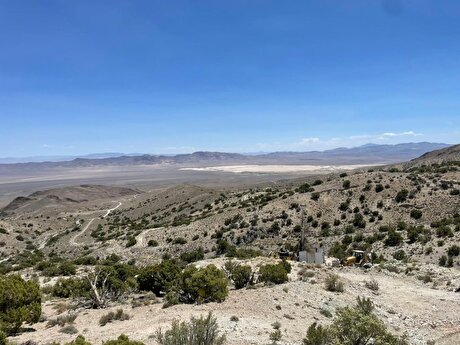
Mercantile Exchange only institution to set price based on supply and demand: MSC chief
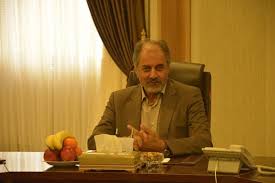
Dr. Bahram Sobhani added given the government’s hand-off approach, investors, manufacturers and industrialists should be more active and the industry minister is expected to set the stage for such activeness by lending support and making the regulations less restrictive. Of course, investment conditions and facilitation of rules governing collaterals and guarantees are equally important to spur investment.
He went on to say that a lot can be done in the industry and manufacturing sector, for instance, provision of incentives to boost exports, tax exemptions on corporate profits in case companies put their money in expansion projects, and introduction of actual foreign exchange rates to prevent smuggling in goods which can be instrumental in helping companies grow.
Recalling the links in the steel production chain which have drawn little attention, the MSC chief said under the 2025 Outlook Plan, the country has to produce 55 million tons of steel on an annual basis. “Evidence suggests we are on course, but as a person with years of experience in this industry, I am concerned. After all, there is a difference between capacity and operationality. At present there are untapped potential in the country. Lack of coordination within the steel production chain, from iron ore to the end product, and focus on areas which are anything but economical – as a result of their improper location or the wrong technology applied – render some investments ineffectual.”
Dr. Sobhani went on to say capacity building comes in different forms, but in order to produce 55 million tons of steel detailed planning is needed. When smaller units come under the umbrella of a major corporation, the need for infrastructure and investment diminishes and the business becomes more economical.
Over the past two years when the steel industry was grappling with a crisis which pushed several steelmakers to the brink of bankruptcy, MSC ran its operations smoothly, it was not given preferential treatment, though, Dr. Sobhani said. During that time, in a marketplace where other steelmakers were present, MSC procured raw materials and sold its products. The key to success is corporate integrity which runs all the way from one end of the production line to the other. High production capacity is the second key factor. Over the years, MSC has not only maintained its production level, it has eyed expansion too.
Inauguration of a pelletizing plant in Sangan, inauguration of a facility that produces automotive sheets in Chaharmahal and Bakhtiari Province, Taraz Steel, expansion of Saba Steel Complex and an increase in the overall production from 5.4 to 7.2 million tons of crude steel are some of the expansion projects of Mobarakeh Steel Group, he said.
As for policy gaps the steel industry is faced with and expectations from the minister of industries, mines and trade, he said the plan the esteemed minister has floated envisions the industry expectations and its implementation will meet the better part of our demand.
But when it comes to development of exports, production capacity and acceptable quality, which do not belong in the government responsibility column, come to the fore, he said, adding, the government has a steering role; to explore and identify export markets, steelmakers need the aid of the government whose support is at times instrumental, for instance, through introduction of actual foreign exchange rates.
If foreign exchange rates are kept unchanged over the course of four years [a reference to one government term in office], the prices of raw materials, wages and similar parameters go up; as a result the price of the end product increases. That amounts to expensive production. If the foreign exchange rate does not go up accordingly, producers lose their export edge, he said, adding this gives our rivals an advantage as they ship their products to Iran.
When we are talking about local production, an increase in output and the industry sector’s share of GDP, we need to look at the steel production chain as a whole. Major mines should be handed over to skillful entities so that introduction of proper equipment results in proper operations and quality products rather than raw materials for sale. Exports of raw iron ore should come to a halt; the top priority is to supply iron ore to local steelmakers before shipping iron ore overseas. Steelmakers should be given assurances that they face no problem in procuring raw materials.
Another issue which has drawn insufficient attention is energy subsidies. The industry would be better off if energy subsidies are restored, Dr. Sobhani said, adding for the steel industry, which is a major consumer of energy in the form of electricity and natural gas, the least the 12th government can do to prop it up is to reinstate subsidies which are envisioned in laws.
Another issue which needs to be addressed is to re-launch work on half-complete state projects. To that end, detailed planning is needed, he said, adding, the half-finished projects the government has problem making operational had better be handed over to the private sector. State projects in different corners of the country have resulted in development of nearby areas, for instance, through road building. However, when the privatization plan goes ahead, the private sector should not be charged for development of nearby regions, because high costs render the new projects uneconomical for private entities. That’s why handover conditions should be facilitated.
For instance, the private sector should be required to pay back its dues over a 10-year period. That would incentivize private entities as what the government has in mind, i.e. creation of jobs, is realized.
Dr. Sobhani described the problems stemming from government’s too much involvement in private sector affairs as huge and said in the steel production cycle, balance should be maintained from extraction of iron ore to production of the end-product by downstream industries and such balance should be struck by the industry itself.
For managers trying to figure out why a certain product is cheap or expensive is illogical, the MSC managing director said, adding prices fluctuate with supply and demand. For instance, the price of iron ore and pellets MSC purchases are based on the ingots produced by Khouzestan Steel Company. The prices of both of these products have been jacked up by 100 percent. Has MSC upped its prices as well? The answer is no, the prices of MSC products have not posted a notable increase. We view the economy as a package including different parameters. One cannot control some and ignore others. We need to accept the fact that the mercantile exchange provides the best mechanism to make that happen. In case there are problems on the exchange, they need to be settled. In the face of the exchange, the pricing system and the Competitiveness Council do not work. We expect Minister of Industries, Mines and Trade Mohammad Shariatmadari, who is an economist and expert in commercial affairs, to fix these problems.
He said the mercantile exchange was launched to set prices based on supply and demand. If the Competitiveness Council manages the prices of steel sheets, it should control the prices of raw materials such as iron ore and natural gas steelmakers widely use. In fact the system needs to see the whole picture because it is more like a chain with many links. Indeed, the exchange plays no role in pricing. The buyer and seller come to an agreement, and the only thing the mercantile exchange provides is an environment for their negotiations. Similarly, MSC has no role in setting the prices. Some are muddying the waters to take advantage. We cannot force different groups to control the prices, but supervision by management is necessary.
As for the performance of MSC over the past four years, he said in the 12 months to March 20, 2013, MSC produced 6.65 million tons of crude steel. It jumped to 7.5 million tons in the 12 months to March 20, 2017. We have planned to raise that figure by 30 percent to 8.63million this year [ends March 20, 2018]. We have been ahead of schedule in the first four months of the current year. The capacity increase over five years ago is 38 percent. MSC has invested around 53 trillion rials in projects within and beyond its plants, with all the capital in question coming from its internal sources.
He said a project in Sangan to produce 5 million tons of concentrates will be launched in the second half of 2018. The project to raise the production capacity of Saba Steel Complex from 800,000 tons to 1.6 million tons is already finished and set to be inaugurated. Besides, steel production at MSC has risen from 5.4 million tons to 7.2 million tons. In addition to expansion, qualitative improvement has also been on the agenda. Production of ribbed sheets at Saba Steel Complex, addition of degassing equipment used in the production of automotive sheets, and launch of a desulfurization system to produce API steel sheets used in natural gas and sour oil transfer pipes as well as in maritime industries are some of these projects. MSC has two joint projects with the Europeans: one is to increase the capacity of Hormozgan Steel Complex from 1.5 million tons to 3 million tons, and the other features a 3-million ton Hot Rolling plan at Shahid Kharrazi facility. In fact, in line with its strategy, MSC seeks to carry on with the development of the country’s steel industry and secure a 25 million ton crude steel production capacity by 2025.
Dr. Sobhani further said in the 12 months to March 20, 2013, MSC exports totaled 570,000 tons; three years later it stood at 1.8 million tons and last year it was 1.555 million tons. Some 1.5 million tons of exports are planned for current year. Of course, we know our target markets. The EU share of MSC exports stands at more than 50 percent. Africa, the Far East and the Middle East are other export markets for MSC products. That means MSC has secured the trust of its customers overseas and serves as the representative of the Islamic Republic of Iran in the heart of Europe.
In conclusion, Dr. Sobhani said in line with its organizational structure, MSC will try to hold on to export’s 25 percent share of its total production. Of course, the volume of exports depends on the share of the local market


Gold price eases after Trump downplays clash with Fed chair Powell

Copper price hits new record as tariff deadline looms

Brazil producers look to halt pig iron output as US tariff threat crimps demand

Three workers rescued after 60 hours trapped in Canada mine

Gold price could hit $4,000 by year-end, says Fidelity

US targets mine waste to boost local critical minerals supply

Energy Fuels surges to 3-year high as it begins heavy rare earth production

Glencore workers brace for layoffs on looming Mount Isa shutdown

Chile’s 2025 vote puts mining sector’s future on the line

Kinross divests entire 12% stake in Yukon-focused White Gold

Gold price could hit $4,000 by year-end, says Fidelity

Southern Copper expects turmoil from US-China trade war to hit copper

Ramaco Resources secures five year permit for Brook rare earth mine in Wyoming

Column: EU’s pledge for $250 billion of US energy imports is delusional
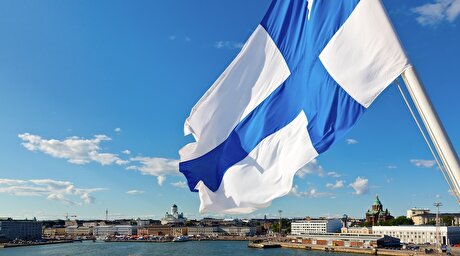
Finland reclaims mining crown as Canada loses ground

Gold price down 1% on strong US economic data
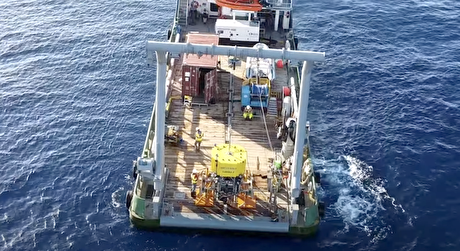
Trump’s deep-sea mining push defies treaties, stirs alarm

Chile’s 2025 vote puts mining sector’s future on the line
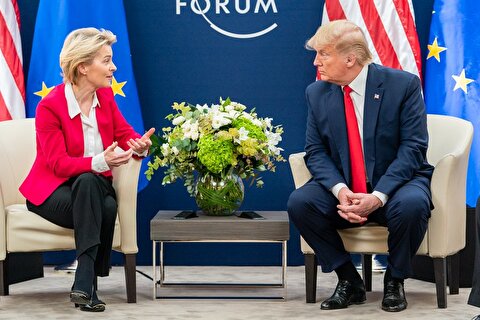
Gold price retreats to near 3-week low on US-EU trade deal

Gold price could hit $4,000 by year-end, says Fidelity

Southern Copper expects turmoil from US-China trade war to hit copper

Ramaco Resources secures five year permit for Brook rare earth mine in Wyoming

Column: EU’s pledge for $250 billion of US energy imports is delusional

Gold price down 1% on strong US economic data

Trump’s deep-sea mining push defies treaties, stirs alarm

Chile’s 2025 vote puts mining sector’s future on the line

Gold price retreats to near 3-week low on US-EU trade deal
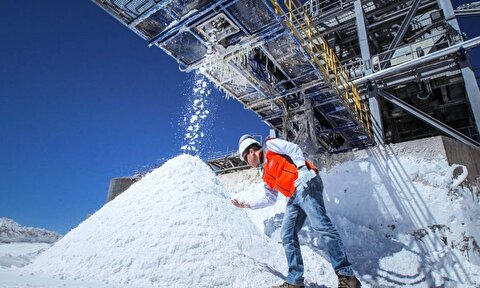
China’s lithium markets gripped by possible supply disruptions
